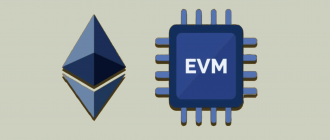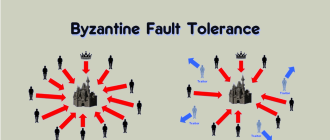Proof of Work (PoW) is a pivotal consensus mechanism in the cryptocurrency realm, marking its initial implementation with Bitcoin. This method underpins the security and stability of numerous cryptocurrency networks. Here, we delve into the technical facets, historical context, usage, criticisms, and alternatives of PoW, catering to an advanced cryptocurrency audience.

What is Proof of Work Mining?
Proof of Work mining involves solving complex cryptographic hashing problems to validate transactions and append new blocks to the blockchain. These computationally intensive tasks safeguard the network by deterring attacks, such as the 51% attack. The core challenge lies in generating a hash that meets specific criteria, such as starting with a certain number of zeros, making the task computationally demanding but easily verifiable by network participants.
Historical Background
The concept of Proof of Work was first delineated in 1993 by Cynthia Dwork and Moni Naor. However, its practical application commenced with the creation of Bitcoin in 2009 by Satoshi Nakamoto, who employed PoW as a means to protect the network from spam and manipulation.
How Does Proof of Work Function?
The Proof of Work mechanism operates by solving a computationally intensive problem aimed at finding a hash that satisfies certain conditions, typically starting with a predefined number of zeros. This is achieved through a process known as “proof of work,” where random values are iterated within the block until the desired hash is produced.
Hashes are the output of hash functions, which transform input data of any length into a fixed-length output. These functions are designed to ensure that even the slightest change in input data results in a substantially different hash, serving a critical role in information security and cryptography to maintain data integrity.
The Technological Process of Proof of Work
- Transaction Selection: Miners gather pending transactions from the pool to form a new block. This stage is crucial as it determines which transactions will be recorded and verified in the blockchain.
- Hash Calculation: During this step, miners include a unique number known as a nonce in the block. The nonce is adjusted with each hashing attempt to generate a new hash. Additionally, the block incorporates the hash from the previous block, creating a linked chain of blocks.
- Nonce Discovery: The objective here is to find a nonce that results in the block hash starting with a specified number of zeros. The number of zeros represents the “difficulty” of the network, which dynamically adjusts based on the total computational power of the network. This adjustment ensures the stability and security of block creation times and network operations.
- Validation and Reward: Once a suitable hash is discovered, the block is broadcast to the network for verification by other participants. If the block is validated, the miner receives rewards in the form of new coins and transaction fees. This incentivizes miners to adhere to network rules and contribute to network security.
Computational Complexity
The computational complexity involved in Proof of Work serves as a safeguard against manipulation and attacks. Any alteration in a single block’s data would require recalculating all subsequent blocks, substantially increasing the computational effort needed by an attacker. This design makes the PoW network particularly resistant to centralized control attempts or double-spending attacks, reinforcing its integrity and reliability.
Mining Equipment for Proof of Work
Evolution of Mining Hardware: The equipment necessary for mining in Proof of Work (PoW) networks must perform intensive computations to solve cryptographic tasks. Over time, this equipment has evolved significantly, reflecting a drive towards increased efficiency and performance in mining operations.
Central Processing Units (CPUs): At the dawn of the cryptocurrency era, such as the early days of the Bitcoin network, mining was primarily conducted using standard CPUs. While capable of processing mining tasks, CPUs are not optimized for cryptographic computations, rendering them less efficient compared to more advanced technologies.
Graphics Processing Units (GPUs): GPUs were adopted for mining due to their ability to handle parallel tasks, significantly enhancing their capability to execute hash functions compared to CPUs. These devices can process a large number of operations simultaneously, making them ideal for algorithms that demand high computational power.
Field-Programmable Gate Arrays (FPGAs): FPGAs are devices that can be programmatically configured to perform specific computational tasks, including mining. They offer better performance and energy efficiency compared to GPUs by allowing hardware configuration to be optimized for specific mining algorithms.

Application-Specific Integrated Circuits (ASICs): ASICs represent the pinnacle of technological advancement in mining hardware. Designed specifically for mining certain cryptocurrencies, they provide maximum performance and energy efficiency. ASICs are capable of executing hash functions at an incredibly fast rate, far surpassing other types of mining devices. However, they are less versatile as they are optimized for a particular algorithm.
Impact on Mining Landscape
Each transition to a new type of equipment in the cryptocurrency world has been associated with an increase in hash rate, which enhances the security of the blockchain. However, this also escalates the mining difficulty, necessitating increasingly powerful and specialized equipment to remain competitive in the mining landscape. This progression reflects the continuous arms race in mining technology, where efficiency and speed are paramount to success.
Projects Utilizing Proof of Work (PoW)
Proof of Work (PoW) was initially implemented by Bitcoin and has since been adopted by many other cryptocurrency projects. Below are some significant projects that use PoW, each with its unique technical details:
Bitcoin (BTC)
As the first cryptocurrency to utilize PoW, Bitcoin introduced the concept of a decentralized network where miners compete to compute hashes for creating new blocks using the SHA-256 algorithm. This ensures the network’s security and allows transaction processing without the need for a third party.
Litecoin (LTC)
Litecoin, a fork of Bitcoin, aims for faster transaction processing. It uses the Scrypt algorithm as its PoW hash function, which was initially thought to offer greater resistance to ASICs than SHA-256. However, ASICs for Scrypt were eventually developed.
Bitcoin Cash (BCH)
Forked from Bitcoin in 2017, Bitcoin Cash increases the block size to process more transactions per block. BCH continues to use the same SHA-256 algorithm as Bitcoin for block mining.
Monero (XMR)
Monero employs the RandomX algorithm, optimized for CPU mining. RandomX was designed to limit the advantages of mining with ASICs and FPGAs, thereby promoting a higher degree of mining decentralization.
Zcash (ZEC)
Zcash utilizes a PoW algorithm called Equihash, which is also aimed at being ASIC-resistant. This algorithm requires substantial amounts of RAM, making ASIC use more challenging and thus favoring GPUs for miners.
These projects highlight the diversity in PoW algorithm application, each addressing specific challenges such as transaction speed, resistance to mining centralization, and network security. The evolution of PoW implementations across different cryptocurrencies demonstrates ongoing efforts to balance efficiency, accessibility, and security in blockchain technology.
Advantages and Disadvantages of Proof of Work
Advantages of Proof of Work
- High Security: Proof of Work provides a high level of security because an attack on the network requires substantial computational power. For a successful 51% attack, a miner must control a majority of the network’s hash rate, making such attempts costly and risky.
- Resistance to Censorship: Due to the decentralized nature of mining, where many participants around the world mine blocks, PoW networks are resistant to attempts at censorship or control by any single entity or group.
- Ease of Verification: Mining tasks in PoW are easily verifiable by other network participants, fostering transparency and maintaining trust within the network.
Disadvantages and Criticisms of Proof of Work
- High Energy Consumption: PoW requires significant amounts of electricity to power mining farms, due to the necessity of performing numerous computations to find the correct hash. For instance, at times, Bitcoin has been known to consume as much electricity as a medium-sized European country, according to the Cambridge Bitcoin Electricity Consumption Index. This raises concerns about the sustainability of PoW-based cryptocurrencies in light of global efforts to reduce carbon emissions.
- Centralization of Mining Operations: As computational power requirements increase, mining becomes profitable only for large players who can afford investments in specialized equipment and electricity. This leads to a concentration of mining power in the hands of a few operators, potentially threatening the decentralized nature of the network. Notable instances where over 50% of Bitcoin’s hash rate was controlled by a few large mining pools raise concerns about possible market manipulations.
- Increase in Orphan Blocks: As PoW tasks become more difficult, the number of “orphan blocks”—those that are mined but not added to the blockchain due to competition among miners—also increases. This not only heightens energy consumption but also reduces the efficiency of the mining process.
- Stifling Innovation: The trend towards developing ASICs specific to particular PoW algorithms may hinder innovation in mining, as new and more efficient technologies often cannot compete with established and optimized ASICs. This limits opportunities for new entrants and contributes to further centralization.
These issues highlight the importance of exploring alternative solutions and approaches to achieving consensus in blockchain that can provide a more sustainable and decentralized network.
Alternative Consensus Mechanisms
In the quest to address the shortcomings of Proof of Work (PoW) such as high energy consumption and risks of centralization, developers have introduced several other consensus mechanisms. Each offers unique technical solutions aimed at resolving specific issues:
Proof of Stake (PoS)
Unlike PoW, which relies on computational tasks, PoS uses the ownership stake of a cryptocurrency as the basis for selecting participants to validate new blocks. The greater the stake, the higher the probability of being chosen to create a block. This significantly reduces energy consumption as traditional mining is non-existent. Notable examples include Ethereum, Cardano, and Tezos.
Delegated Proof of Stake (DPoS)
A variation of PoS, DPoS allows token holders to vote for a small number of delegates who then validate transactions and create blocks. This speeds up transactions and enhances scalability but can increase centralization to some extent. Examples of DPoS include EOS and Tron.
Proof of Authority (PoA)
In PoA, transactions and blocks are validated by pre-approved “authoritative” nodes (validators). PoA is suited for private blockchain networks where trust in validators is already established, allowing for high performance without significant energy costs. VeChain and BNB Smart Chain are examples of networks using PoA.
Proof of Space (PoSpace) or Proof of Capacity (PoC)
This method utilizes the available disk space on a participant’s device to prove their participation in the network. Participants pre-compute complex functions and store the results on their hard drives, which are then used to mine blocks. Chia is an example of a cryptocurrency that uses PoSpace.
Each of these consensus mechanisms offers different trade-offs between security, centralization, transaction speed, and energy consumption. This diversity allows for the selection of the most suitable option depending on the goals and requirements of a particular project or network. These alternatives not only seek to address the energy inefficiencies of PoW but also aim to enhance transaction efficiency and network governance, adapting blockchain technology for a wider range of applications.
Conclusion
Proof of Work (PoW) remains a fundamental element in the cryptocurrency world, despite its shortcomings. It has set the standard for security and reliability for subsequent technologies. At the same time, the crypto community is actively exploring new algorithms, aiming to find more efficient and environmentally friendly solutions for the future of blockchain. These efforts reflect a broader desire to balance the benefits of decentralized financial systems with the practical realities of their implementation, including their environmental impact and the need for equitable access to mining capabilities. This ongoing evolution in consensus mechanisms highlights the dynamic and innovative nature of blockchain technology as it continues to mature and adapt to global needs.







